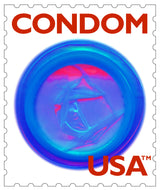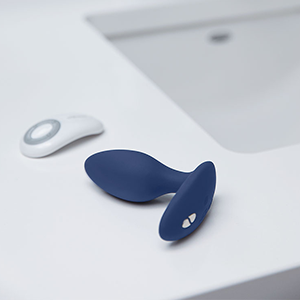What Are Condoms?
- A Condom is a thin rubber sheath worn on a man's penis during sexual intercourse as a contraceptive or as protection against infection.
Types of Condoms
There are two types of condoms; male and female. A condom is a barrier contraceptive - it blocks the route a sperm would take to fertilize an egg. They can be made from latex rubber, polyurethane, or lambskin. According to the NHS (National Health Service, UK), males condoms are 98% effective against pregnancy if used correctly, while female condoms are about 95% effective. Nobody is sure what the origin of the English word "condom" is. There were rumors that Dr. Condominvented the condom for King Charles II of England. However, it is most likely that Dr. Condom, otherwise known as The Earl of Condom, never existed - also, condoms were around long before that period. Most likely the name comes from the Italian word guantone, which comes from the Italian word guanto, meaning "glove".
Lambskin condoms - these are still available. Lambskin condoms have been around for a very long time. Some people prefer them because they are better at transmitting body warmth and tactile sensation, compared to other condom materials. They are also less allergenic. However, modern materials are better at preventing the transmission of sexually transmitted diseases (STDs). Lambskin condoms are also very expensive.
Condoms are widely used throughout the world. In Japan, 80% of sexually active people use condoms as their main method of contraception. It is hard to get an accurate picture of condom use - some teenagers and young adults might overestimate how often they use condoms during sex, a study found.
How does a condom work?
Condoms stop the sperm from reaching the egg. It creates a physical barrier - this barrier makes sure fertilization (pregnancy) does not occur. Apart from being made mainly of very thin latex rubber or polyurethane, male condoms contain a lubricant, as well as a spermicide that either destroys or damages the sperm. Extra spermicide is also available in most pharmacies.
To use a condom effectively - to prevent an unwanted pregnancy by using a condom - the penis should not touch the vagina before the condom has been placed. A man does not necessarily have to ejaculate for sperm to come out of his penis; this can happen before ejaculation.
Experts say that the use of condoms significantly helps stop the spread of STDs (sexually transmitted diseases) or STIs (sexually transmitted infections). It is important to remember that oral sex is also a route for STDs. The condom must be placed correctly before sexual contact is made, and removed immediately after ejaculation.
How To Use a Condom



How to use a male condom:Check the condom has not passed it's expiry date.
- Hold the bulb of the condom between finger and thumb, making sure it is the right way round (so it will unroll down the penis - the rolled-up ridge needs to be on the outside not the inside).
- Make sure there is no air trapped inside (by holding the bulb at the end).
- While still holding the bulb, place the condom over the head of the penis (penis needs to be erect).
- Gently unroll it down the penis, all the way. If the condom does not unroll it has probably been placed the wrong way round (inside out). If it has been placed the wrong way round, get a new condom and start again.
- Immediately after ejaculation, before the penis has lost its erection, withdraw from your partner holding the condom in place to prevent leaking, then pull the condom off the penis slowly and gently being careful not to spill the contents.
- Before any further sexual contact wash your hands and use a new condom, even if the male isn't planning to ejaculate again. Never try to re-use a condom.
- How to use a female condom (also known as a femidom)



-
- While holding the soft inner ring between finger and thumb, place the closed end of the condom into the vagina.
- Push the condom as far into the vagina as possible - use two fingers. The outer ring should always remain lying against the outside of the vagina.
- If the outer ring goes into the vagina during sex, stop and adjust it so it is outside again.
- When the penis goes into the vagina be careful it does not slip in between the condom and the vaginal wall.
- When sex is over twist the condom and pull the end of it to remove it. Do this carefully; making sure no sperm enters the vagina.
-
- It is important never to reuse a condom. Use a new one every time you have sex - it does not matter how close one sexual act is to the previous one.
- Always make sure your condom has not passed its expiry date.
- To protect the environment, condoms should not be flushed down the toilet.
- What are the benefits of using a condom?
- They are effective and reliable in preventing pregnancy (if used correctly).
-
- There are virtually no side effects for the user. Very rarely, there may be some allergy to latex rubber, spermicides, or plastic. There are special condoms for people who do react with an allergy.
- Both sexual partners have a significantly lower chance of getting or passing on an STD.
- They can be bought easily.
- No advance preparation is needed (ideal for unplanned sex).
- Male condoms come in many forms, shapes, size and flavors.
- They may be inserted up to 8 hours before sex.
- They give the woman control over her sexual health.
- They can be used during a woman's menstrual period.
-
- They significantly lower the chance of getting or passing on an STD.
- They may lower a woman's risk of developing cervical cancer. Condom use lowers young women's risk of being infected with the HPV virus, thus lowering her cervical cancer risk.
What are the disadvantages and possible problems when using
a condom?
-
- It breaks the sequence of events during foreplay and sex. Some people say the enjoyment of sex is interrupted because everything has to stop so that the condom is placed properly. An ideal way to resolve this is to include the placing of the condom as part of the whole act, part of the foreplay.
- Some men with erectile dysfunction problems find their problem is more difficult if they have to interrupt the sexual act to put the condom on (sustaining the erection is sometimes harder). A study found that loss of erection due to condom use may lead to risky sexual behavior.
- Although condoms are very reliable if properly used, they can break, and can let you down if you do not use them properly.
- Male condoms differ in size (both length and width) and using the wrong size (too large or too small) can result in the condom slipping off during sex.
- Sharp fingernails and some jewelry can break or tear a condom.
- Accidental tears are possible when opening the wrapper.
- Some lubricant cannot be used with condoms, such as oil-based ones, some creams, baby oil or petroleum jelly. Only water-based lubricants can be used.
- They are only 95 - 98% reliable even if used correctly, combining condom use with a spermicide may help to prevent pregnancy.
- If a person has thrush and is using creams, suppositories or pessaries for treatment, the contraceptive qualities of a condom could be affected.
- Femidoms (female condoms) are not available everywhere.







Leave a comment